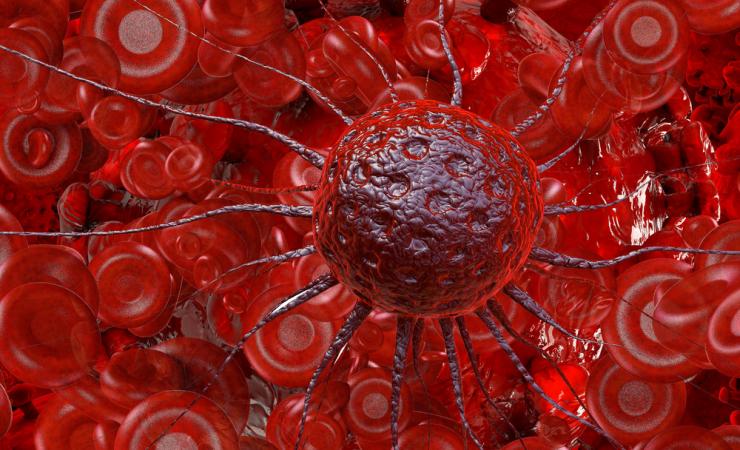Patients diagnosed with early-stage cancer frequently undergo surgery to remove the tumour. However, after surgery it is hard to tell if there is any cancer left in the body that might continue to grow over time and eventually lead to metastatic cancer. Doctors refer to this as minimal residual disease (MRD).
The challenge we face today is to accurately determine which patients have MRD and so need additional treatment (such as chemotherapy, targeted therapy, and immunotherapy) after surgery. Equally, we need to know which patients don’t have MRD, as they do not need further treatment and can be just monitored. This is extremely important as many cancer treatments come with multiple side effects, so treating patients unnecessarily may cause more harm than good. At the same time, not treating patients who need it allows the cancer to reoccur and potentially spread.
Current imaging technologies, like CT (computed tomography) or MRI (magnetic resonance imaging) scans, are not sensitive enough to detect MRD, pointing to the need for more sensitive tests that are able to detect traces of cancer remaining in the body after surgery.
A “liquid biopsy” to detect hidden cancer cells
GUIDE.MRD is one of the very first IHI projects. It aims to address this challenge by finding the best ways to detect signs of MRD via blood tests so that clinicians can identify with confidence which patients have MRD and which do not. The project focuses on patients with lung, pancreatic and colorectal cancers.
“Early detection of metastases is one of the most important goals in cancer research, since metastases are the main reason for the aggressiveness of cancer and early detection with a blood test ("liquid biopsy") opens up the opportunity for a timely therapeutic intervention,” explained GUIDE.MRD coordinator Klaus Pantel of the University Medical Center Hamburg Eppendorf in Germany.
Hunting for hints of tumour DNA
Cancers usually shed small fragments of tumour DNA into the patient’s bloodstream, and these circulating tumour DNA (ctDNA) fragments can be recognised and detected by blood tests. While tests to detect ctDNA in blood samples already exist, the minimum level of ctDNA each test can detect varies from one test to another, and the key details of how accurately these tests work are not publicly available. Only when we know that a ctDNA blood test can accurately distinguish a patient that has MRD from a patient that does not, will health authorities, doctors and patients be able to have confidence in the results and make the best decisions for that patient’s care.
GUIDE.MRD’s first step will be to define standards and use them to benchmark ctDNA tests available now based on how accurately they can identify ctDNA in a patient’s blood sample. When ready, the standards will be made public so that they can be used widely. Next, in a clinical trial, GUIDE.MRD will relate the level of ctDNA in a patient’s blood sample to whether a patient has MRD or not, and validate the results against clinical outcomes to treatments. Finally, GUIDE.MRD will explore how the most accurate ctDNA blood tests can be used as a tool to help doctors and patients confidently select the right treatments for their care.
“We care deeply about advancing precision oncology and translating innovative science meaningfully to improve patient care” said project leader Maria Karasarides, Vice President, Worldwide Medical Oncology at Bristol Myers Squibb. “Our partnership is committed to advancing ctDNA diagnostic testing and together with patients as our partners, we see a future where biomarkers can effectively guide the right treatment choices for improved outcomes.”
